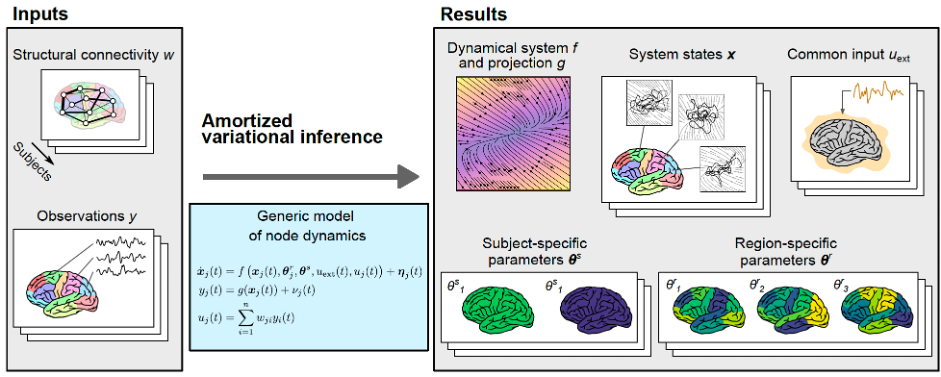- Paper Digest
Human Brain Project researchers characterize brain regions using machine learning
20 March 2023

HBP researchers have used a novel machine learning method to describe the differences between brain regions using functional magnetic resonance imaging (fMRI) data. The technique is capable of discovering distinct regional characteristics starting from observational fMRI data – obtained in this case from the Human Connectome Project. The results can then be compared to known genetic and structural features from those areas, improving our understanding of brain dynamics. The findings have been published in the journal Science Advances.
Compared to most methods to characterize brain regions, which rely on simplified neural mass models whose features are known in advance, this approach is more data-driven and relies on unsupervised machine learning. “Our main goal for this study was to let the data speak more. Unlike other systems, we did not specify the features of the different neural masses, but rather let the model figure them out on its own,” explains Viktor Sip from the Institut de Neurosciences des Systèmes in Marseille, France, first author of the study. “The model then draws a regional map of the brain based on differences and similarities that it is able to determine from the data alone.”
The researchers then linked the regions estimated by the model to structural data from the Julich Brain Atlas, developed by HBP researchers in Germany, and genetic data from Allen Brain Atlas, built at Allen Institute in the United States. “We found that the map drawn by the model from fMRI data of alive, healthy subjects was comparable to the map obtained from post-mortem donors,” says Sip. “This means that the system offers us a reliable, alternative approach for the study of brain dynamics, one less reliant on premade assumptions and more on raw observational data and unsupervised learning.” Even though the model was developed in healthy subjects in a resting state, the researchers suggest that this approach could be expanded to include data obtained from task-based scans, or from patients in a clinical context.
Reference: Viktor Sip, Meysam Hashemi, Timo Dickscheid, Katrin Amunts, Spase Petkoski, Viktor Jirsa (2023) Characterization of regional differences in resting-state fMRI with a data-driven network model of brain dynamics. Science Advances, DOI: 10.1126/sciadv.abq754



